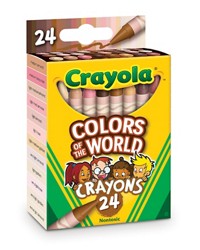Advertisement
Grab your lab coat. Let's get started
Welcome!
Welcome!
Create an account below to get 6 C&EN articles per month, receive newsletters and more - all free.
It seems this is your first time logging in online. Please enter the following information to continue.
As an ACS member you automatically get access to this site. All we need is few more details to create your reading experience.
Not you? Sign in with a different account.
Not you? Sign in with a different account.
ERROR 1
ERROR 1
ERROR 2
ERROR 2
ERROR 2
ERROR 2
ERROR 2
Password and Confirm password must match.
If you have an ACS member number, please enter it here so we can link this account to your membership. (optional)
ERROR 2
ACS values your privacy. By submitting your information, you are gaining access to C&EN and subscribing to our weekly newsletter. We use the information you provide to make your reading experience better, and we will never sell your data to third party members.
ACS Meeting News
Reclassifying curls, coils, and kinks
New research aims to make hair typing more inclusive
by Gina Vitale
March 28, 2023

Taking care of hair that curls is anything but straightforward. For many Black people and others with curly, coily, or kinky hair, it can be mystifying to figure out which hair products, like shampoos and conditioners, are best suited to their particular hair. One well-known system was developed by celebrity hair stylist Andre Walker. It categorizes hair as types 1 through 4 (1 being straight, 2 wavy, 3 curly, and 4 kinky/coily), and subtypes a-c corresponding to characteristics within hair types, like hair fineness or coarseness and curl pattern. But that still isn’t an exact science. Hair product users must try to compare their strands to reference images and see which category matches the closest, and the pictures only represent a few selected categories of hair, while in reality there’s much more diversity in curly hair types.
Michelle Gaines, a chemist at Spelman College, a historically Black college, knew there had to be a better way. Along with undergraduate student Imani Page and other collaborators at the University of Massachusetts Amherst, she set out to measure more nuanced differences between a spectrum of curly, coily, and kinky hair types, and to create a proof-of-concept for correlating her team’s new parameters with existing systems like Walker’s. She presented the results at the ACS Spring 2023 meeting on Sunday, March 26 during a talk in the Division of Presidential Events.
Volunteers at Spelman offered up fibers of hair that naturally fell from the scalp through activities like brushing. Gaines and her team examined a range of mechanical and geometric properties of that hair. Mechanical measurements included, for example, clocking the amount of force it took to unravel a strand from its curly state—this gives an estimate of “the uncurling force,” or the force needed for a curl to hold its shape.
Uncurling force explains why “I could take a pen and just stick it in my hair, and it’ll be there,” Gaines laughed. “It’s not going anywhere, it’s not going to slide out.”
Geometric measurements focused more on shape, like hair fibers’ ellipticity, which is how much a cross section of a strand diverges from a perfect circle.
Another geometric parameter they measured was the number of contours, or curls, in a 3 cm length of hair in its natural state (not pulled taut). This, researchers said in a preprint of the work, could allow people to figure out their curl pattern by simply counting up the curls in a given length of their hair.
“It seems like we can correlate number of contours with the Andre Walker system, which is a good start,” Gaines said. With a larger sample of size of hair, Gaines hopes to have enough data to tell users exactly which hair type they fall under in the Andre Walker system based on their number of curls per given length.
In addition to upping the sample size, Gaines said further avenues could include looking at hair that comes directly from the scalp (rather than say, a brush), and also hair from different parts of the scalp.
“The implications of this research further demonstrate the complexities of hair morphology,” said Esther Oluwaseun, cosmetic chemist and licensed esthetician, via email, “and that further research is needed to understand the diverse nature of non-straight hair and how this may play a role in synthesizing hair care ingredients and formulations.”
Gaines says “it would be amazing” to develop a new classification system altogether. A possible moniker for the system? She suggested “Gaines-Page,” to honor her undergraduate collaborator who contributed greatly to the research.




Join the conversation
Contact the reporter
Submit a Letter to the Editor for publication
Engage with us on Twitter